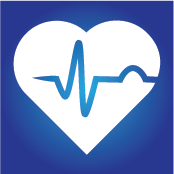The authors of this study set out to review existing research to create evidence-based exercise guidelines for improving cardiorespiratory health and cardiometabolic health which are specifically designed for those with SCI. Continue reading
Blog Archives: cardiovascular
New research could lead to changes in SCI recovery guidelines
| 1 commentSpinal cord perfusion pressure is the difference between mean arterial pressure and cerebrospinal fluid pressure. Continue reading

Cardiovascular health during rehabilitation
| 0 commentsCardiovascular disease is more prevalent within the SCI community than in the general population.The reason for this is because of the extensive amount of bed rest following traumatic spinal cord injury, which results in a low level of physical activity and cardiovascular fitness. Continue reading
Wheelchair angles and heart health
| 1 commentCan the angle of your wheelchair affect your heart health? Have you ever wondered whether different body positions affect the way your heart pumps blood to the rest of your body? Continue reading
Exercise heart rate and physical activity after SCI
| 2 commentsWhy study physical activity and participation? High-level SCI can cause damage to nerves that regulate the cardiovascular system, making it hard for affected individuals to regulate their heart rate and blood pressure. As a consequence, blood pressure can be very low in people with high-level SCI, and their heart rates are often slow and fail to increase as they should during exercise. Continue reading
Arterial stiffness after SCI and interventions
| 1 commentWhat is “central arterial stiffness,” and why is it important? Arterial stiffness is the consequence of many modifiable and non-modifiable factors that include age, gender, physical activity levels, family history, diet, body composition, and blood pressure level. An increase in arterial stiffness is directly correlated with cardiovascular (CV) disease and the hardening and loss of elasticity of the arteries in the heart and brain. Continue reading
The costs of autonomic dysreflexia for people with SCI
| 0 commentsWhat is Autonomic Dysreflexia (AD)? AD is a life-threatening condition that can develop as a common secondary condition for people with spinal cord injuries. It is triggered by an overstimulation of the autonomic nervous system—the system responsible for all unconscious bodily functions such as the heart control and breathing. Continue reading
Progression of cardiovascular impairments after spinal cord injury
| 4 commentsLisa Liu This is a summary of a research study done by Dr. Christopher West and his colleagues at ICORD. Dr. West’s research interests are focussed on understanding cardiovascular adaptations after spinal cord injury, and the benefits of exercise to Read More…

